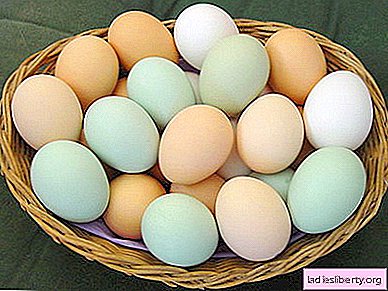
Kind Chrysanthemum (hrysanthemum) from the Asteraceae or Compositae family includes more than 200 species of annual and perennial herbaceous plants. The name of chrysanthemum is translated from Greek as “golden flower”, which is explained by the yellow color of its inflorescences.
The homeland of chrysanthemums is the Far East, where people admired them, dating back to ancient times. So, even 3 thousand years ago, the Chinese were engaged in the cultivation of these beautiful plants in pots. For the Japanese, chrysanthemum is also a favorite flower and a symbol of longevity. In addition, in Japan, this flower is also revered as the emblem of the country and an important part of the national culture.
There is currently no single approach to the classification of chrysanthemums. Experts from China, Germany and France are of the opinion that there are 10 classes of chrysanthemums; USA and England - 15. We have varieties of chrysanthemums are classified as large-flowered, medium-flowered and small-flowered. Chrysanthemums are also divided according to the type of flower, the height of the bush and the timing of flowering. Depending on the timing of flowering, chrysanthemum varieties are early, medium, medium late and late. Obviously, with the selection of chrysanthemums with different flowering periods, you can create a magnificent flower arrangement in your garden that will delight you with its bright colors from summer to late autumn.
Chrysanthemums - growing and care
Chrysanthemums are thermophilic plants, therefore their successful cultivation begins with the right choice of a place for planting. Gorgeous chrysanthemums can be grown only in an elevated sunny place with slightly acidic or neutral soil with good drainage and high permeability. With a lack of lighting, chrysanthemums will stretch shoots and the flowering period characteristic of this species will be violated. Good results when growing these plants can be achieved only on fertile lands, so poor soil should be fertilized with rotted manure, compost, peat before planting.
Chrysanthemum loves moisture, so before flowering, it needs abundant watering. For irrigation, it is best to use soft water, rain or one that has settled for at least 12 hours. If the plant lacks moisture, this will immediately affect its decorative properties.
Chrysanthemum is very responsive to the application of fertilizers, both mineral and organic. For young plants, it is better to use nitrogen fertilizers for top dressing, which are necessary for building green mass and positively affecting leaf color and flower size. Then, phosphorus-potassium fertilizers should be used, which help to improve the flowering of plants and increase their immunity. However, it must be remembered that watering chrysanthemums with top dressing is possible only under the root, so that mineral fertilizers on the leaves do not cause a burn. Good results are also given by top dressing of a burnt mullein or chicken droppings.
Chrysanthemums - transplant and reproduction
Chrysanthemum is a plant of open ground, so it should be planted annually in the garden or on a personal plot. It is better to dig for its landing not a hole, but a trench, maintaining a distance between cuttings of 30-50 cm (depending on the characteristics of the variety). After planting the cuttings, seedlings should be covered with covering material to create a favorable microclimate.
The easiest way to reproduce chrysanthemums is to divide the bush. Carry it in the spring, after the disappearance of the threat of return frosts. To do this, digging a bush and dividing the young shoots, immediately plant shoots with roots and water them abundantly.
Chrysanthemums are also propagated by cuttings. For such propagation, spring shoots of green shoots having a length of 10 cm to 15 cm should be cut, planted in a soil mixture and well watered until the cuttings root.
Can be used to propagate chrysanthemum seeds. They are sown in May directly into the ground for 3-4 pieces per well. With this method of propagation, the chrysanthemum will bloom around the beginning of August. To start flowering earlier, sowing should be carried out in March, in a warm room, and after the appearance of seedlings, they should be dived into pots, followed by planting in the ground at the end of May. With this method of propagation, chrysanthemums begin to bloom from the end of June.
Cuttings can be obtained in the fall, after flowering plants. In this case, the chrysanthemum should be left in the pot for the winter as a uterine plant. The shoots that have bloomed should be cut off near the ground in a pot and placed in a cool place, limiting its watering so that it does not die. In March, apical offspring will appear from the earth from its roots, which should be used as cuttings.
Such cuttings are planted in bowls or boxes with a mixture of humus with peat and sand poured 2-3 cm on top. Before planting, it is recommended that a sharp knife make a smooth cut on them under a leaf knot for better rooting. Then the cuttings are planted shallow in a layer of sand, and, having previously been sprayed with water, cover with glass. It is better to keep them at a temperature of 13 ° C to 15 ° C, and after rooting, which occurs after about 3 weeks, the glass should be removed and the young plants should be planted in small pots.
Chrysanthemums - Diseases and Pests
Diseases of chrysanthemums occur most often from improper care and usually occur when there is insufficient or excessive watering or too high air temperature. The most common disease of chrysanthemums is gray rot, which manifests itself in damage to plants by light brown spots and decay of inflorescences. In this case, the affected plants must be removed and burned.
Another common disease of chrysanthemums is powdery mildew, which can be recognized by the whitish coating on the leaves. For treatment purposes, plants are sprayed with a copper soap liquid.
Chrysanthemums can also be affected by leaf rust, leaf spot (septoria), and bacterial root cancer. In the first two cases, they are treated by spraying with fungicides, in the latter, they are immediately removed from the plantings and burned.
The main pests of chrysanthemum are aphids and spider mites. Aphids are destroyed by washing the plants with soapy water once a week. You can also use a solution of pyrethrum, which is prepared by insisting 200 g. pyrethrum powder in 10 liters of water for 12 hours. Then 50 ml of the resulting infusion is diluted in 10 liters of water and, adding 50 g. Soaps, used to combat aphids.
Both aphids and spider mites can be destroyed using a water extract of garlic, as well as prepared insecticides.
Thus, having acquired high-quality planting material and observing the rules of caring for chrysanthemums, you can successfully grow a plant on your site, which is a symbol of longevity, happiness and beauty.











